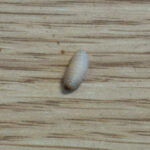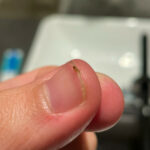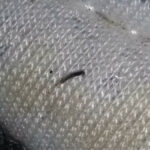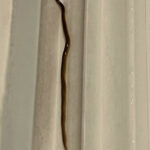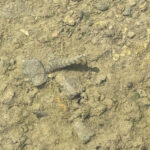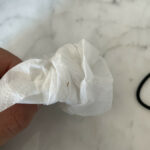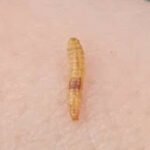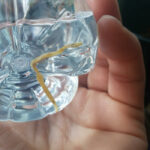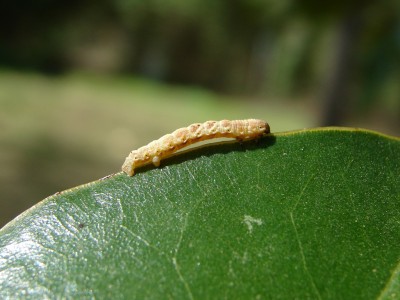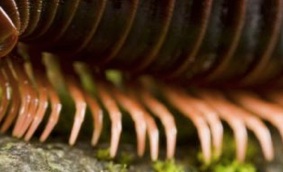
We answer a lot of questions from readers that go something like this: “what kind of worm is brown [or black, red, etc.] with lots of legs?” or “how do I get rid of the worms with small legs in my garage [or basement, shed, etc.]?” In response to such questions, one of the first things we must say is that if you are finding a creature with legs, you aren’t finding (or hoping to get rid of) a worm. Rather, you are probably finding some type of larva (very often a caterpillar) or millipede, which can have legs and prolegs, and the latter aren’t even legs. (That is, they aren’t so-called “true legs.”) All of this can quickly get confusing: people think they are finding worms with legs, but often the creature technically has prolegs (not only legs), and in any case it isn’t a worm. To help get this all straight, we decided to explain legs and prolegs, while simultaneously pointing out that worms have neither (even though they can have bristles on their bodies that are kind of like legs).
Although we’ve long been planning to explain legs and prolegs, we were recently reminded of this intention when we wrote about worm legs, which, as we pointed out in this article, do not exist. The closest things that worms have to legs are called setae, which are little hairs or bristles that help certain types of worms move. For example, the setae on earthworms prevent them from backsliding as they wriggle forward. However, people often think worms have legs for the simple reason that they call creatures like caterpillars and millipedes “worms,” which we think is an unfortunate (if understandable) use of the already vague word “worm.” Thus worms, at least as we use the term, do not have legs.
However, lots of worm-like creatures do have legs and prolegs. To take the latter first, prolegs are small stubs – fleshy tubercles, to be more precise – that are found on the abdomens of the larval form of several types of insects. For instance, prolegs are found on most of the larvae in the order Lepidoptera, which is made up of butterflies and moths, making the larvae in this order caterpillars. Although prolegs help with locomotion, they are technically not legs, and in fact prolegs are believed not to have evolved from the same anatomical structures that gave rise to legs. (That is, prolegs are not homologous to true legs.)
What, then, is a leg, and why isn’t a proleg a leg? The two matters can be addressed at once. A leg is a jointed appendage composed of at least the following five segments: coxa, trochanter, femur, tibia, and tarsus. When an appendage posses these elements, it is called a “true leg.” Since prolegs lack these elements – they are only “stubs” without joints – they are technically not legs. Some creatures commonly mistaken for worms have both prolegs and legs (e.g., caterpillars and fly larvae), whereas others have only legs (e.g., millipedes, who legs actually have seven segments thanks to the prefemur and tarsal claw segments).
To conclude, lots of worm-like creatures have legs, and of these creatures some have legs and prolegs, whereas others have only legs. (No creatures have only prolegs, though.) However, worms have neither legs nor prolegs, so, contrary to the many reader emails that suggest otherwise, it is never possible to find a worm with any sort of legs.
All About Worms is always free, always reader-supported. Your tips via CashApp, Venmo, or Paypal are appreciated! Receipts will come from ISIPP Publishing.



